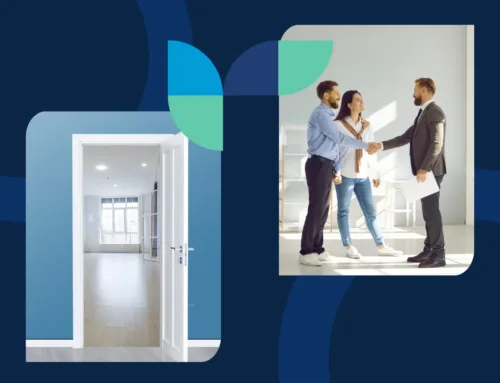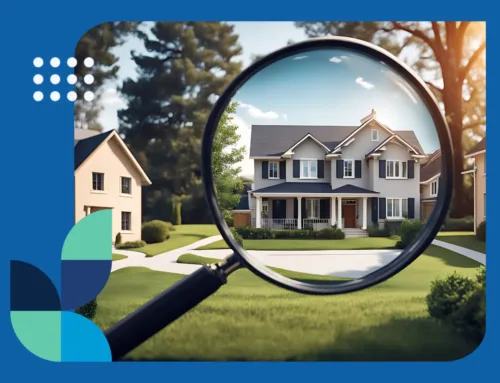Efficient property management is the key to being a successful landlord.
Picture this: Your residents are satisfied, you get a stable inflow of rent every month, and you have time for your personal life.
A lot of landlords struggle to achieve such a scenario because they aren’t organized and don’t follow procedures that would save them from repetitive tasks and also from pitfalls that result in huge losses.
For example: evicting a resident can cost somewhere between $5000 to $7000, but with the right resident screening strategy in place, you could drastically reduce the likelihood of such a scenario.
In this article, we will share proven strategies that will help you spend less time on your rental properties while reaping more benefits.
The best-case scenario is that you spend less than an hour per month for each property you own.
Table of Contents
- Well-Designed Processes
- Ready-to-Use Templates
- Useful Software
- Preventative Maintenance
- Strong Vendor Relationships
- Hiring a Property Manager
While your rental business might not match the scale of the best property management companies, you can still take their strategies and implement them into your own workflow.
The following strategies are easy to implement for every landlord and will save you tons of time and effort down the line.
Well-Designed Processes
Think about the last time you handled a resident move-out. Maybe you figured out a quick way to make things easier, but didn’t write it down. Now, a year later, you can’t remember what you did to make it go so smoothly.
To keep your property running efficiently, it’s important to document your processes. This way, you can repeat the same steps every time without any guesswork. It saves you time, reduces mistakes, and shows your residents that you’re organized and professional.
Once you have clear processes in place for everything in your rental business, tasks become much easier. You won’t have to figure things out from scratch each time—you’ll have a system that keeps things running smoothly and frees you up to focus on other things.
Here are some essential tasks that you will have to deal with repeatedly. We’ve provided the process for each task. Feel free to follow them as they are, or change them to fit your own workflow:
Resident Screening
Finding the right resident can be a challenge, but with a clear screening process in place, you can simplify the task and make confident decisions every time. Here’s a step-by-step guide to help you screen potential residents efficiently and effectively.
Before you start, there are two activities that you only need to do once:
-
Define Your Resident Criteria: Start by figuring out what kind of resident you’re looking for. Decide on the minimum income-to-rent ratio, like 2.5 times the monthly rent. Set a baseline for the credit score you’re comfortable with.
Think about how much rental history they should have and what kind of eviction records are acceptable. Also, consider if there are any criminal convictions you’re okay with.
Don’t forget to factor in things like whether you’ll allow pets, smoking, or how many people can live in the unit.
-
Create a Rental Application: Make sure your rental application covers all the bases.
Ask for basic info like their name, address, and contact details. Include sections where they can verify their employment, list their income sources, and provide proof of income.
Get details on their rental history, like where they’ve lived before and why they moved.
Ask for some references, both personal and professional. Finally, be sure they give clear authorization for you to run background checks and pull their credit report.
After you have these in place, you’re ready to start taking in applications and start your screening process:
-
Implement Prescreening: Before diving in too deep, do a quick pre-screening. Have a chat with potential residents over the phone or via email to see if they’re a good fit.
Once you get their application, take a thorough look to make sure everything is filled out correctly and accurately.
-
Conduct Background Checks: Next, it’s time to dig a little deeper. Run a credit check to see their score, payment history, and how much debt they have.
Check their criminal background according to the criteria you’ve set. See if they’ve ever been evicted before. And don’t forget to reach out to their previous landlords to confirm their rental history.
-
Verify Income and Employment: You’ll want to make sure they can afford the rent, so contact their employers to confirm their job and income.
Ask for pay stubs or tax returns to back it up.
-
Personal Interviews (Optional): If you’re still unsure, consider doing an in-person or virtual interview.
This can give you a better feel for their personality and whether they’ll be a good fit for your property.
We highly recommend taking the time for these interviews because they offer another opportunity to avoid residents who can become a problem later on.
-
Make a Decision: Now it’s time to choose the best resident. Compare everyone based on the criteria you’ve set.
Think about their rental history, how stable their income is, and the overall impression they’ve made. Once you’ve decided, be sure to let everyone know whether they’ve been selected or not.
-
Document Everything: Lastly, keep track of everything. Save all the details, communications, and decisions you’ve made during the process. This will come in handy if you need to reference it later.
These steps are easy to follow and maximize the chances of finding a resident who is great for your property and also provides stable rental income.
Marketing
Marketing your rental property doesn’t have to be complicated. With a simple, step-by-step plan, you can get your place in front of the right people and find a great resident in no time. Here’s how to do it, even if you’re not a professional:
-
Prepare Your Property: Make sure your property is in its best possible condition before listing it.
Clean thoroughly, make any necessary repairs, and consider a fresh coat of paint if needed. Declutter the space to make it look more spacious and inviting.
The better your property looks, the more attractive it will be to potential residents.
-
Set the Right Rent Price: Do some research to find out what similar properties in your area are renting for.
You can check online listings or talk to local real estate agents.
Setting the right price is crucial—too high, and you might not get interest; too low, and you’re leaving money on the table. Aim for a competitive price that reflects the condition and location of your property.
-
Take High-Quality Photos: Good photos can make or break your listing. Use a good camera or smartphone, and take photos during the day when there’s plenty of natural light.
Capture each room from multiple angles, and highlight any special features like a large backyard or updated kitchen. If possible, consider using a wide-angle lens to make spaces look larger.
-
Write a Compelling Listing Description: Your listing description should be clear, concise, and engaging.
Start with the most attractive features of the property, like location, amenities, or recent upgrades. Include essential details like the number of bedrooms, bathrooms, and any included utilities.
Avoid using too much jargon—just focus on what makes your property a great place to live.
-
Post Your Listing: Decide on the best platforms to list your property. Popular online rental websites like Zillow and Realtor.com are a good start, but don’t forget about local classifieds or community bulletin boards.
Social media can also be a powerful tool—consider posting in local groups or on your personal profiles.
-
Schedule Showings: Once you start getting interest, be prepared to schedule showings.
Offer flexible times to accommodate different schedules, including evenings and weekends. Make sure the property is clean and tidy before each showing, and be ready to answer any questions the potential residents may have.
-
Update or Renew Your Listing as Needed: If your property isn’t getting much attention, revisit your listing. You might need to update the photos, tweak the description, or adjust the price.
Also, keep your listing active by renewing it on the platforms you’ve chosen. This will keep your property visible to potential residents who are actively searching.
Marketing your property the right way is important. The more demand there is for it, the greater the chances of you finding the right resident becomes.
Turnovers
When a resident moves out, it can feel a bit overwhelming to get everything ready for the next one. But with a simple plan, you can handle the process smoothly. Here’s an easy-to-follow guide to help you prepare your property for the next resident:
-
Prepare for the Move-Out: As the resident’s lease is coming to an end, make sure they provide a move-out notice at least 30 days before they plan to leave, though 60-90 days’ notice is even better.
This gives you ample time to start preparing for the next resident. Once you have their notice, reach out to confirm their move-out date and provide clear instructions on what they need to do before leaving, like cleaning the property, removing all their belongings, and returning the keys.
It’s a good idea to remind them of any specific requirements listed in the lease, such as filling holes in walls or mowing the lawn one last time.
-
Conduct a Final Walkthrough: Once the resident has moved out, schedule a time to do a final walkthrough of the property.
This is your chance to inspect the condition of the home and see if everything is in order. Take your time and check each room carefully, including closets, basements, and attics.
Look for any signs of damage or items that were left behind.
-
Assess and Document Any Damage: During the walkthrough, if you notice any damage beyond normal wear and tear (like holes in the walls, broken appliances, or stained carpets), document it thoroughly.
Take clear photos and write down detailed notes. This will help if there’s a dispute over the security deposit later. Remember, normal wear and tear, like minor scuffs or fading paint, is expected and shouldn’t be counted as damage.
-
Handle Security Deposit Returns: After assessing the property, calculate any deductions you need to make from the security deposit for repairs.
By law, you must return the remaining deposit to the resident within a certain timeframe (check your local regulations).
Be sure to provide an itemized list of any deductions, explaining why you’re withholding part of the deposit. If everything is in good condition, return the full deposit promptly.
-
Plan and Complete Necessary Repairs: Once you’ve documented any damage, plan out the necessary repairs.
Prioritize fixing anything that could make the property less appealing to new residents, like broken fixtures or damaged flooring. If the repairs are minor, you might be able to handle them yourself, but for bigger jobs, consider hiring a professional.
Completing these repairs quickly will help you get the property back on the market sooner.
-
Clean and Refresh the Property: After repairs are done, give the property a thorough cleaning.
This includes deep cleaning carpets, scrubbing bathrooms and kitchens, and wiping down all surfaces. Don’t forget to clean the windows and check that all light fixtures have working bulbs.
A clean, fresh-smelling property will make a great impression on new residents and help you rent it out faster.
By the time you’ve gone through all these steps, your property will be ready for the new resident to move in!
Regular Inspections
Regular property inspections are key to keeping your rental in great shape, but knowing where to start can be tricky. These steps make it easy to quickly conduct inspections that produce meaningful results without taking up much time:
-
Establish an Inspection Schedule: Start by deciding how often you want to inspect your property. For most landlords, semiannual or annual inspections are common, but you can choose what works best for you.
Once you’ve decided, set a consistent schedule and mark it on your calendar so you don’t forget.
-
Prepare for the Inspection: Before the inspection, gather some basic tools you’ll need, like a flashlight to check darker areas, a camera to document any issues, and a simple checklist to ensure you don’t miss anything.
Take a quick look at the rental agreement to see if there are any specific inspection requirements. Then, make sure to notify your resident well in advance about the upcoming inspection, so they’re prepared.
-
Conduct the Inspection: Start with the exterior of the property. Walk around the outside and check for any damage, like cracks in the walls, issues with the landscaping, or problems with walkways and stairs.
Then, move inside and inspect each room. In the kitchen, look at the appliances, countertops, and cabinets. In the bathrooms, check the plumbing, fixtures, and look for any signs of mold. Also, inspect the bedrooms and living areas, paying attention to walls, floors, and ceilings.
Don’t forget to check the heating and cooling systems, electrical systems, and make sure smoke detectors are working properly.
While you’re doing this, take photos of any problems you notice, write down any repairs that might be needed, and fill out your inspection checklist.
-
Post-Inspection Follow-Up: After the inspection, talk to your resident about any issues you found. Be clear about what needs to be fixed and discuss how and when these repairs will happen.
Once you’ve scheduled any necessary repairs, keep a simple record of the inspection and what actions you’ve taken.
This will help you stay organized and ensure everything is properly maintained.
This should make regular inspections straightforward and manageable, helping you keep your property in good condition and addressing any issues before they become bigger problems.
Rent Payments
Your rental payments are the reason why you’re going through all this trouble. However, all sorts of issues can pop up when you’re trying to receive your rental income.
Here’s a solid process that you can follow so that no matter the situation, you can quickly deal with it in an orderly manner:
-
Set Up a Payment System: Start by choosing how you’ll collect rent. Decide whether you’ll use online payment platforms, checks, or direct bank transfers.
Once you’ve set up the system, make sure it’s easy for residents to use. If you choose an online platform, test it yourself to ensure everything works smoothly.
-
Sign a Lease Agreement with Clear Payment Terms: When a resident agrees to rent your property, make sure the lease agreement clearly states the rent amount, due date, accepted payment methods, and any late fees.
Go over these terms with your resident before they sign to ensure they understand when and how to pay the rent.
-
Collect the First Month’s Rent and Security Deposit: Before the resident moves in, collect the first month’s rent and the security deposit.
This should be done at the lease signing or before they receive the keys. If the payment doesn’t come through as agreed, do not proceed with the move-in until it’s resolved.
-
Notify Residents When Rent is Due: As the rent due date approaches, especially for the first month, send a reminder to your residents.
This can be a quick email or text message. If you’re using an online payment system, some platforms can automate this reminder for you.
-
Receive and Record Rent Payments: Once the rent is paid, immediately record the payment in your system.
If the payment was made online, check your account to confirm it was processed correctly. If a resident pays by check, deposit it as soon as possible and wait for it to clear.
-
Follow Up on Late Payments Immediately: If the rent isn’t paid on time, don’t wait. Contact the resident the day after the payment is due to find out what happened. Politely remind them of the payment terms in the lease.
If the resident has a genuine reason for the delay, work with them to resolve the issue quickly. If not, proceed with enforcing the lease terms.
-
Enforce Late Fees as Stated in the Lease: If the rent is late, apply the late fee as outlined in the lease agreement.
Communicate this to the resident clearly, explaining that the late fee has been added to their next payment.
If the resident refuses to pay, remind them that late fees are a part of the signed agreement.
-
Keep a Record of All Rent Payments and Issues: Maintain detailed records of all payments, including the date and amount received, the method of payment, and any late fees applied.
If there are any disputes or issues, document all communication with the resident. This record-keeping will help you stay organized and protect you in case of any legal issues.
If matters escalate beyond late payments and your resident is completely refusing to comply, you might have to consider an eviction process.
Scheduled Maintenance
Taking care of your property before problems arise is one of the smartest things you can do as a landlord. Maintenance might sound like a big job, but with a little planning and the right help, it’s a breeze.
These steps will keep your property in top shape, even if you’re not handling the tools yourself.
-
Create a Maintenance Schedule: Start by jotting down all the maintenance tasks your property needs and how often they should happen.
Think about things like HVAC servicing twice a year, cleaning gutters once a year, and checking smoke detectors every six months.
Use a calendar or even a simple notebook to map this out so you know when each task is coming up.
-
Find Reliable Service Providers: Look around for good professionals who can help with the tasks you won’t be doing yourself, like HVAC technicians, plumbers, or handymen.
Ask for recommendations from friends or other landlords, check online reviews, and get a few quotes. Once you find the right people, save their contact details so you can reach out whenever you need them.
-
Set Up Regular Appointments: Once you have your go-to service providers, get those maintenance tasks scheduled.
Call them up and book appointments based on your maintenance schedule. It’s a good idea to book these in advance, especially for busy times of the year.
Make sure they know exactly what needs to be done when they come.
-
Keep Your Residents in the Loop: After you’ve scheduled the maintenance, let your residents know what’s happening. Send them a quick email or leave a note with the details—when the work will be done and what it involves.
This way, they’re prepared, and there are no surprises when the service provider arrives.
-
Oversee the Work: On the day of the appointment, try to be there if you can, or arrange for someone else to be present.
This helps ensure everything goes smoothly and the work is done right. If you can’t be there, give the service provider a quick call to check in and confirm that everything’s on track.
-
Review and Approve the Work: Once the maintenance is done, ask the service provider for a quick rundown of what they did.
Look over their report or notes to make sure everything was handled as planned. If everything looks good, give them the thumbs-up and take care of the payment.
-
Keep Track of Everything: After everything’s wrapped up, jot down the details—what was done, who did it, and when.
Keep these notes organized in a file or on your computer. This way, you’ll have a clear record of all the maintenance, which can be really handy down the road.
Regular maintenance saves you from unexpected headaches and costly repairs down the road. By sticking to a simple preventative maintenance plan and working with reliable professionals, you’ll keep your property in great shape and your residents happy.
Have Ready-to-Use Templates
Creating forms and documents from scratch every time can be frustrating and time-consuming.
But the good news is, you don’t have to reinvent the wheel each time. There are certain templates that, once set up, will save you a lot of hassle down the road.
Here are the key templates you’ll likely need most often:
- Lease Agreement: Keep a standard lease agreement handy. It should cover the basics like how much rent is, when it’s due, and other important rules. Make sure it follows local laws. Keep a digital copy on your computer and a printed version for easy access.
- Resident Applications: Have an application form ready that collects basic info like the resident’s name, job details, and rental history. Make sure there’s a part where they agree to a background check. Have this form available online and in print.
- Marketing Material: Keep a set of good-quality photos of your property and a simple template for describing it. This way, when you need to find new residents, you can quickly create a professional-looking listing.
- Inspections and Maintenance Checklists: Create easy-to-follow checklists for regular inspections and basic maintenance tasks. Use a digital version so you can easily access and update them, and keep track of everything you’ve done.
- Turnover Checklists: Have a checklist ready for when a resident moves out. It should cover things like inspections, cleaning, repairs, and changing the locks. This helps you get the property ready for the next resident quickly.
All of these templates go hand in hand with the processes listed above and can save you tons of time.
Technology Workflows
Managing your rental property doesn’t have to be complicated. With the right tools, you can handle everything from resident screening to rent collection without breaking a sweat. Here’s a rundown of some simple, easy-to-use tech that will make your life as a landlord a lot easier:
- Basic Property Management Tools: If you’re juggling a couple of properties, you don’t need anything too fancy. Consider a tool like Stessa—it’s free and helps you track income, expenses, and even some basic resident management features. It’s perfect for keeping all your property details in one place without getting overwhelmed.
- Simple Accounting Solutions: For managing your finances, you don’t need an accountant or complex software. Something as straightforward as Wave Accounting can help you keep track of rent payments and expenses. It’s user-friendly, and best of all, it’s free for most features. You’ll appreciate how it simplifies your bookkeeping and gets you ready for tax season without too much hassle.
- Resident Screening Made Easy: When you’re looking for new residents, it’s important to do your homework, but it doesn’t have to be hard. RentPrep offers affordable, pay-as-you-go resident screening services. It gives you the essential background checks without locking you into a subscription or complex process.
- Online Applications: Forget paper applications—tools like Zillow Rental Manager let you set up an online application process easily. Prospective residents can apply online, and you can review everything from the comfort of your home. It’s simple, and it cuts down on the back-and-forth.
- Keyless Entry for Showings: You don’t have to drive to the property every time someone wants to see it. Consider using a basic smart lock like the August Smart Lock. You can send a temporary code to potential residents, so they can view the property on their own schedule, while you keep track of who’s coming and going.
- Communicating with Residents: For staying in touch with your residents, your phone and personal email should suffice. If you feel that emails aren’t enough to keep up with your rental portfolio, you can always try specialized apps like RentRedi to maintain clear and consistent communication with residents.
Proactive Maintenance Strategies to Prevent Costly Repairs
Being ahead of maintenance isn’t just a good idea—it’s essential. Without regular upkeep, small issues can quickly turn into big, expensive problems. By focusing on prevention and scheduling regular check-ins, you can keep your property in great shape and avoid those unexpected, costly repairs that can disrupt your cash flow and stress you out.
Neglecting maintenance might save you time in the short term, but it can lead to serious issues like water damage, mold, or even safety hazards that could harm your residents and your bottom line. Taking a proactive approach means fewer headaches, happier residents, and a property that holds its value over time.
With that being said, here are some strategies you can integrate into your maintenance process to make it far more effective:
Preventive Maintenance
Preventive maintenance is all about taking care of things before they break.
- Set a Routine: Don’t wait for problems to pop up. Instead, set up a regular schedule for things like HVAC servicing, plumbing checks, and roof inspections. By tackling these tasks consistently, you can catch small issues before they turn into expensive fixes.
- Focus on High-Risk Areas: Pay special attention to parts of your property that could cause the most trouble, like the roof, plumbing, and heating systems. Regularly checking these areas helps you avoid big problems down the line.
- Stick to the Plan: The key to preventive maintenance is sticking to your routine. Even if everything seems fine, following your schedule ensures you’re not caught off guard by unexpected repairs.
Regular Inspections
Regular inspections are your chance to catch issues early.
- Stay Ahead of Problems: Instead of waiting for residents to report something, use inspections to spot and fix minor problems early. This not only prevents bigger issues but also shows your residents that you’re on top of things.
- Check Key Areas: When you inspect, focus on spots that are most likely to need attention, like plumbing, the roof, or safety equipment. This way, you can prevent small repairs from becoming big headaches.
- Keep Records: Document what you find during inspections. This helps you track your property’s condition over time and gives you proof that you’ve been maintaining the place if there’s ever a dispute.
Building Strong Vendor Partnerships
Having a few reliable professionals you can call on is key to efficient property management. Whether it’s a quick repair or help with your finances, having the right people on speed dial can save you a lot of headaches. Here are the essential relationships to focus on:
- Go-To Maintenance Pros: It’s important to have a couple of trustworthy handymen or local contractors you can rely on. Whether it’s a leaky faucet or a bigger repair, knowing who to call means problems get fixed quickly, keeping your property in good shape and your residents happy.
- A Good Accountant: You don’t need to be a financial whiz to manage your property’s finances—just have a solid accountant on your team. They can help you keep track of income and expenses, handle your taxes, and make sure you’re staying within the rules. This way, you can focus on managing your property while they handle the numbers.
- A CFO for Financial Guidance (Optional): If your property portfolio grows, having a part-time CFO (Chief Financial Officer) can be a big help. They provide higher-level financial advice, helping you plan for the future and make smart investment decisions. For small-scale landlords, this might not be necessary, but it’s something to consider as you expand.
- A Trustworthy Lawyer: Having a lawyer who knows the ins and outs of rental property law is essential. They can help you draft leases, handle disputes, and ensure you’re following all local regulations. A good lawyer can save you from legal troubles down the road, making them extremely valuable.
You don’t need a huge network—just a few reliable contacts who can help you keep things running smoothly.
Taking a proactive approach to maintenance protects not only your property but also your peace of mind. These strategies ensure you avoid costly surprises and keep everything running smoothly.
Hiring a Property Management Company to Maximize Efficiency
If you feel like you’re having to dedicate too much time to your rental income—time that you don’t have—hiring a property management company could be the solution. Here’s how they can help you:
- Resident Management: They take care of finding and screening residents, handling lease agreements, and collecting rent. This means you get reliable residents and steady income without the hassle.
- Maintenance and Repairs: A property management company deals with all the upkeep, from routine maintenance to emergency repairs. They have a network of trusted vendors, so your property stays in great shape without you having to lift a finger.
- Regular Inspections: They perform regular property inspections to catch any issues early. This helps maintain the property’s value and keeps your residents happy.
- Financial Reporting: They provide clear financial reports, so you can easily see where your money is going. This helps you make informed decisions without getting bogged down in the details.
- Legal Compliance: Keeping up with laws and regulations can be tricky, but a property management company makes sure you’re always in compliance, protecting you from potential legal troubles.
- Marketing and Filling Vacancies: They handle advertising your property and finding new residents quickly, so you don’t have to worry about long vacancy periods.
- Handling Evictions: If things go south with a resident, they manage the eviction process, taking that stress off your plate.
A property management company can take a lot off your shoulders, letting you enjoy the benefits of owning rental property without the day-to-day headaches.
Conclusion
Managing your rental property doesn’t have to be stressful. With the right processes in place, you can keep things running smoothly and enjoy the benefits without the headaches.
By staying organized, using simple tools, and relying on trusted professionals, you’ll find that property management becomes much easier. You’ll spend less time on repetitive tasks and more time enjoying the steady income from your rentals.
Whether you’re handling everything yourself or thinking about hiring help, these strategies will help you keep your properties in great shape and your residents happy. With a little effort upfront, you’ll see big rewards in the long run.
Remember, the goal is to make property management as simple and efficient as possible. When you do that, you’ll have more time for what really matters—and your rental business will thrive.
Here’s a quick summary of everything we covered in this article:
- Well-Designed Processes: Establish clear, step-by-step procedures for all your tasks to avoid repetitive decision-making.
- Ready-to-Use Templates: Save time with pre-made forms and checklists for leases, applications, and inspections.
- Proactive Maintenance: Prevent major issues with a regular maintenance schedule and routine inspections.
- Vendor Partnerships: Build a network of trusted vendors for quick and reliable maintenance and repairs.
- Leverage Technology: Use property management software for tasks like resident screening, rent collection, and communication.
- Hire a Property Management Company: Let the pros handle resident management, maintenance, and legal compliance.
These tips will help you save time, reduce stress, and keep your residents happy, leading to long-term success and efficient property management.








